Nov. 5 update on COVID-19 in MN: 3rd straight day of record new cases; 25 deaths

Go Deeper.
Create an account or log in to save stories.
Like this?
Thanks for liking this story! We have added it to a list of your favorite stories.
Updated: 11:37 a.m.
A bad week continues to worsen in Minnesota’s COVID-19 pandemic.
The Health Department on Thursday reported 3,956 newly confirmed or probable cases of the disease — a new one-day high and the third consecutive day of record new cases; 25 more people died.
More than 900 people are in Minnesota hospital beds now due to COVID-19, with more than 200 needing intensive care, both near record highs. Regular hospital admissions are averaging about 146 per day, up from 56 a month ago.
New cases are growing more quickly than new testing for the first time since May.
Turn Up Your Support
MPR News helps you turn down the noise and build shared understanding. Turn up your support for this public resource and keep trusted journalism accessible to all.
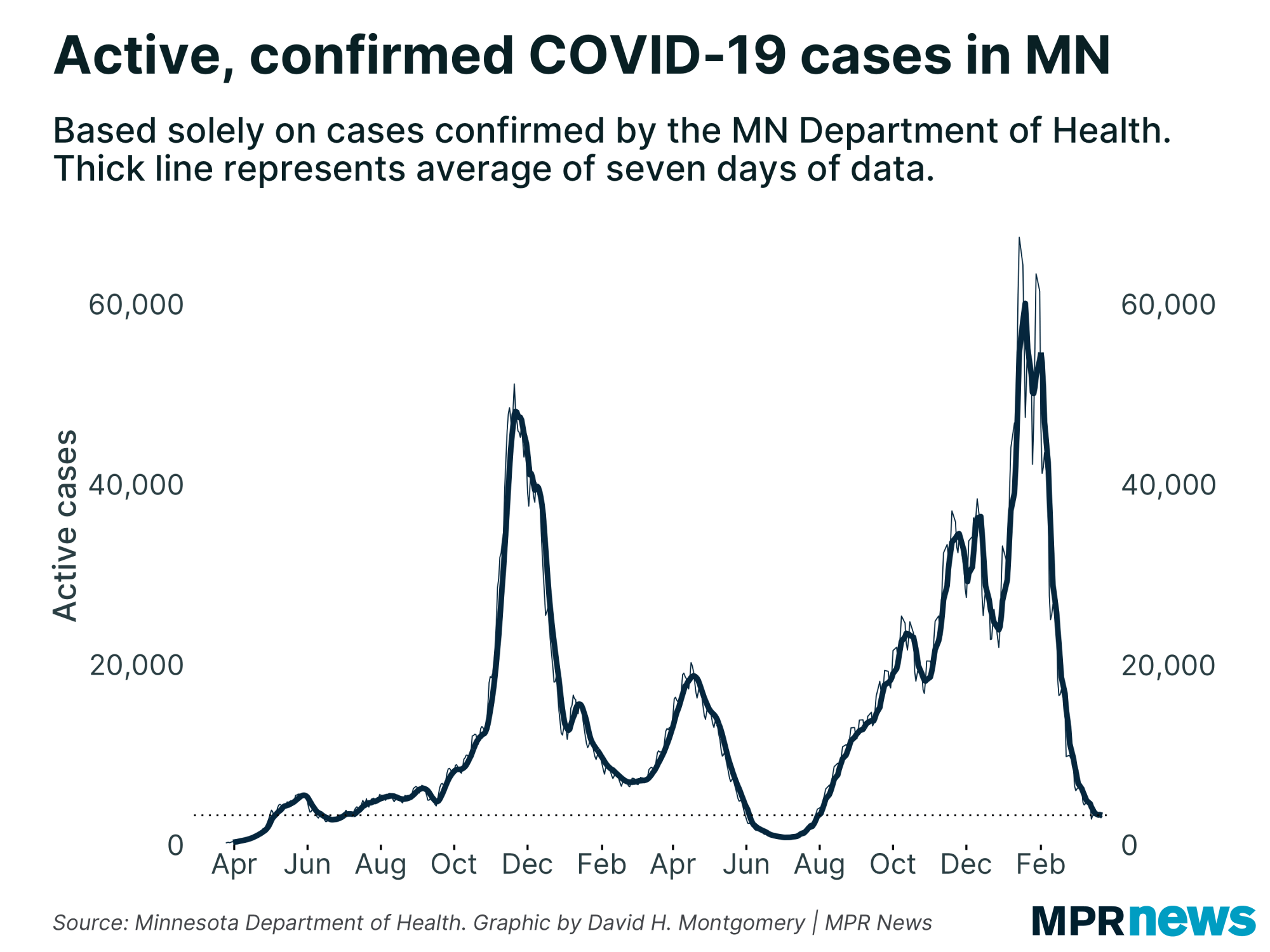
The newest numbers come a day after Minnesota Health Commissioner Jan Malcolm called the state’s current COVID-19 surge “disheartening and alarming” as she braced Minnesotans for more bad days ahead.
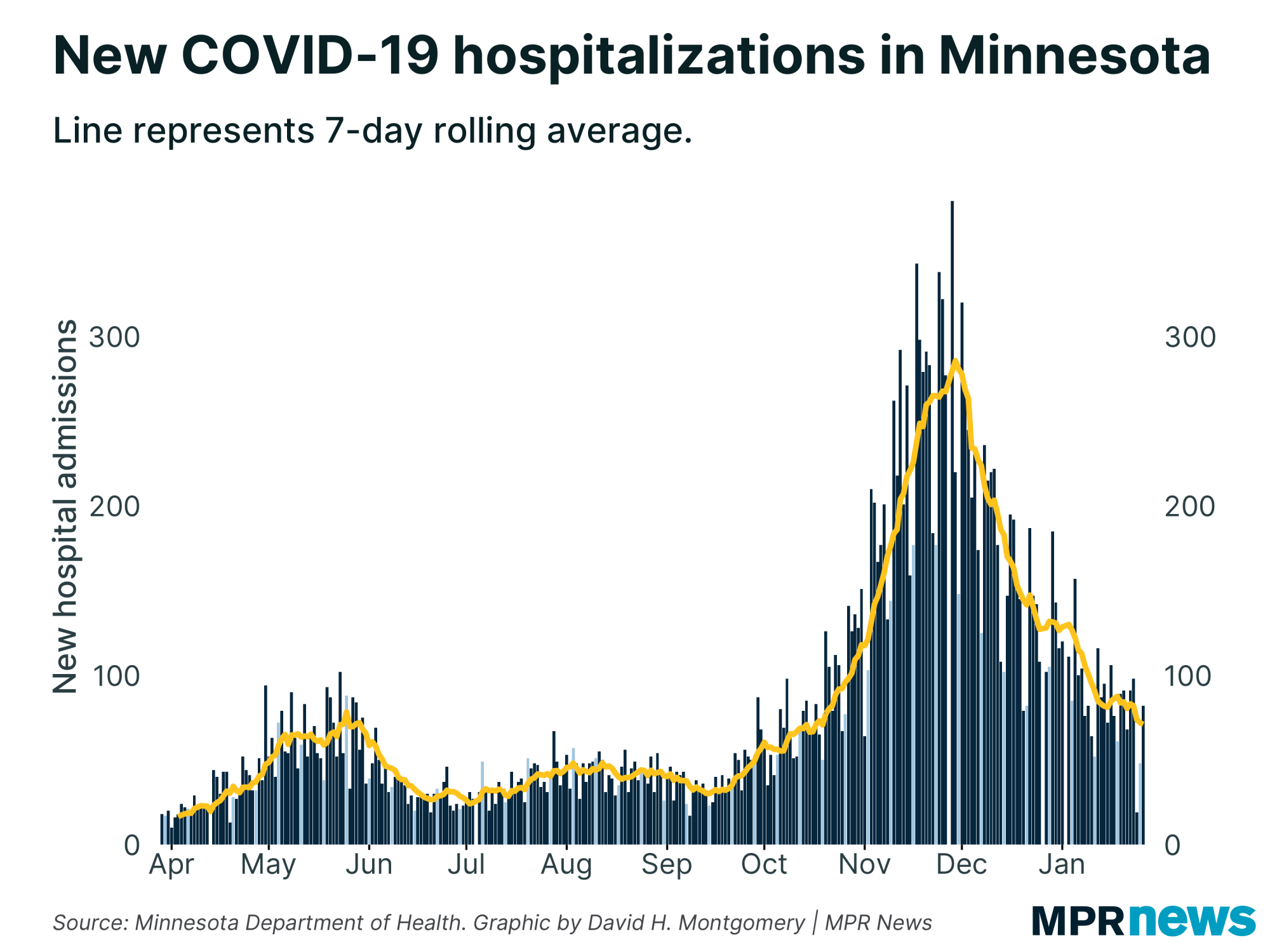
“It feels like we’re losing ground,” she told reporters Wednesday as she compared the rampant spread cutting through Minnesota and its neighbor states to a wildfire. “We’re falling behind the rapid spread of this virus.”
Of the 164,865 confirmed or probable cases identified in the pandemic to date, about 84 percent have recovered to the point they no longer need to be isolated.
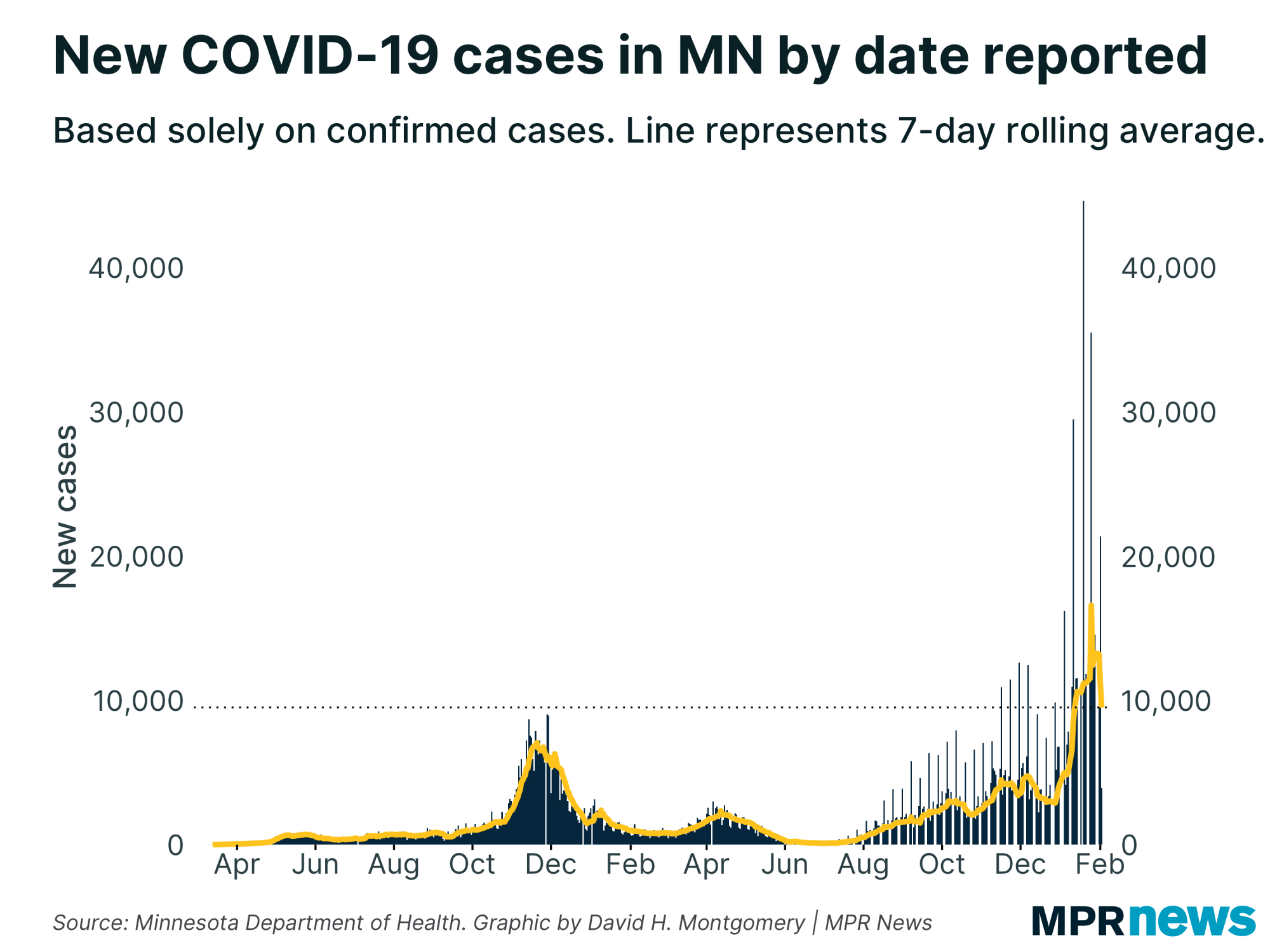
The deaths reported Thursday raised Minnesota’s toll to 2,555. Among those who’ve died, about 70 percent had been living in long-term care or assisted living facilities; most had underlying health problems.

Caseloads rising across age groups
New cases are up dramatically over the past month in all age groups.
People in their 20s still make up the age bracket with the state’s largest number of confirmed cases — nearly 35,000 since the pandemic began, including more than 19,000 among people ages 20-24.
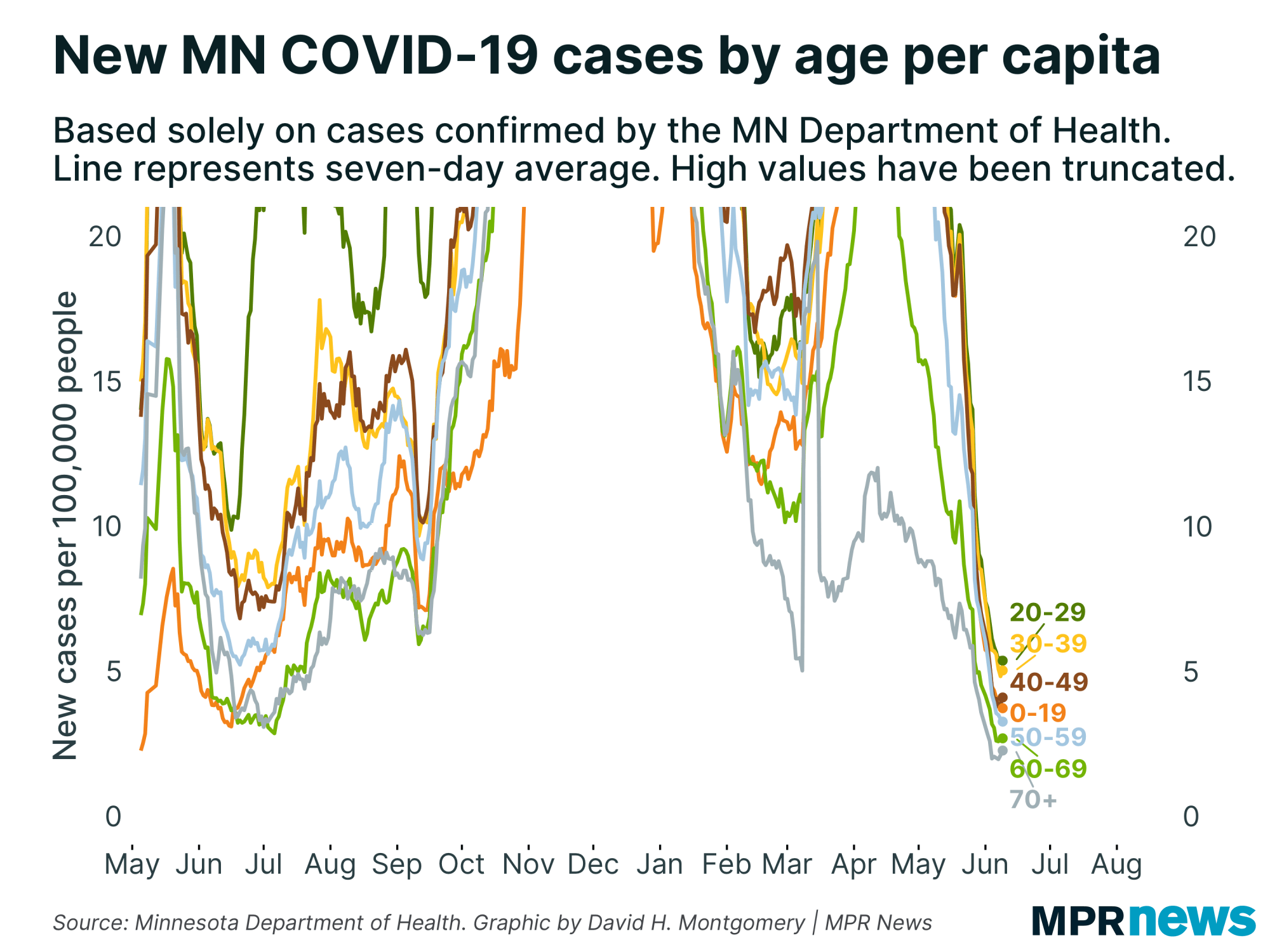
The number of high school-age children confirmed with the disease has also grown, with more than 13,700 total cases among children ages 15 to 19 since the pandemic began.
Those numbers help explain why experts remain particularly concerned about teens and young adults as spreaders of the virus.
While less likely to feel the worst effects of the disease and end up hospitalized, experts worry youth and young adults will spread it to grandparents and other vulnerable populations. It’s especially concerning because people can have the coronavirus and spread COVID-19 when they don’t have symptoms.
Virus surges along Minnesota’s western border
Regionally, central and northern Minnesota have driven much of the recent increase in new cases while Hennepin and Ramsey counties show some of the slowest case growth in the state.
Newly reported cases have been highest in northwestern Minnesota. Cases are surging currently in the Dakotas. North Dakota and South Dakota have the country’s worst per-capita spread rates.
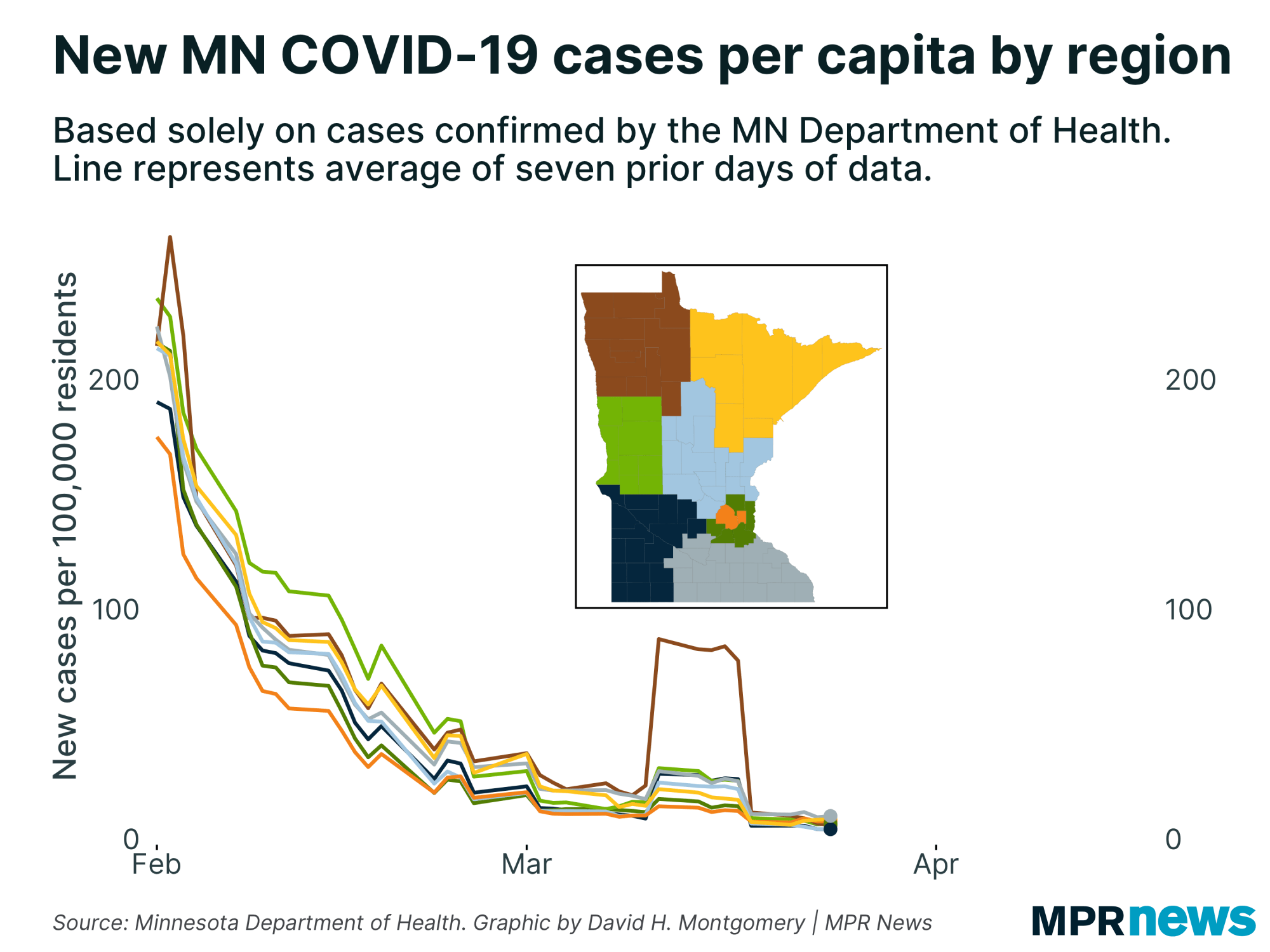
Northern Minnesota, once the region least affected by the disease, has also seen its caseload grow dramatically in recent weeks.
Collectively, rural areas of Minnesota continue to report the most new COVID-19 cases.
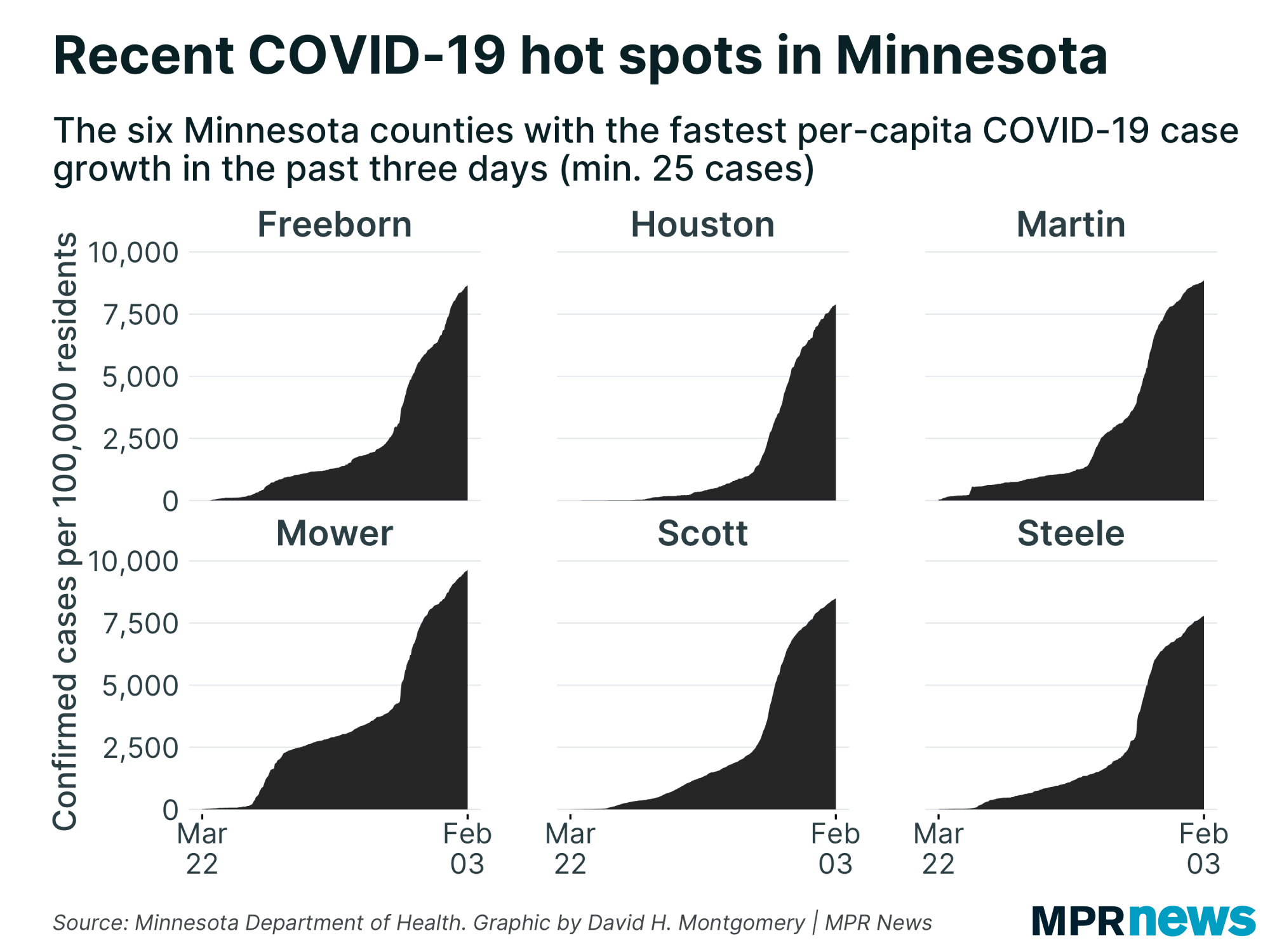
Latino, Indigenous cases jump
In Minnesota and across the country, COVID-19 has hit communities of color disproportionately hard in both cases and deaths.
That’s especially true for Minnesotans of Hispanic descent. They, along with Black Minnesotans are also being hospitalized and moved to intensive care units at higher rates than the overall population.
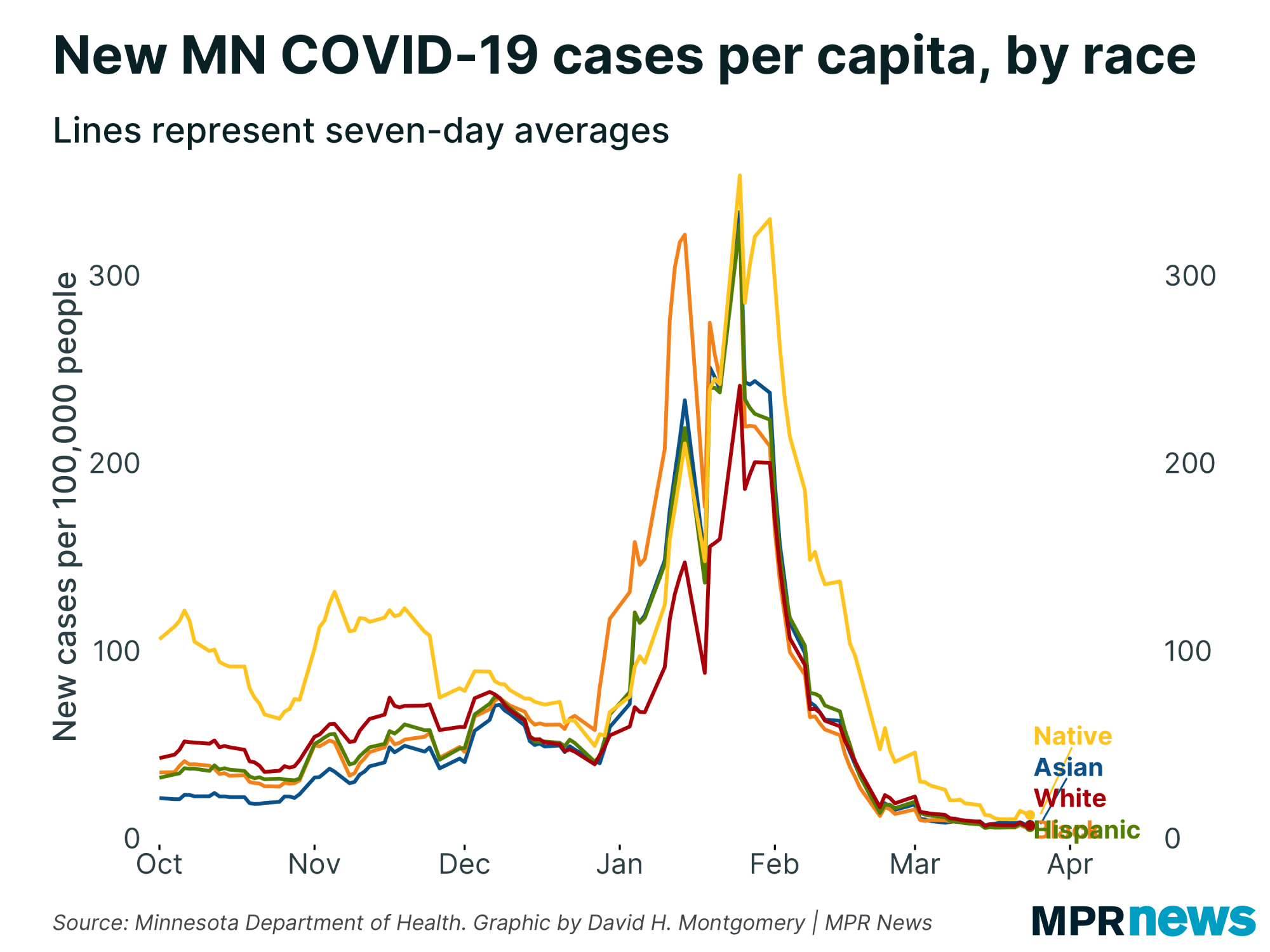
Similar trends hold true for Minnesota’s Indigenous residents. Counts among Indigenous people jumped in October relative to population.
October data also show newly confirmed cases accelerating among Latino people in Minnesota.
Distrust of the government, together with deeply rooted health and economic disparities, have hampered efforts to boost testing among communities of color, particularly for unauthorized immigrants who fear their personal information may be used to deport them.
‘Minnesota is in a bad spot’
The latest numbers continue to show rampant spread across Minnesota, not limited to just one region or demographic group. like earlier in the pandemic.
It’s being driven now by Minnesotans’ informal gatherings and get-togethers with family and friends where it’s spread unknowingly by people who have the virus but do not have symptoms, officials say.
Hospital capacity is tight as cases grow. Intensive care beds in the Twin Cities metro are now at about 98 percent capacity; statewide, it’s a little less, state infectious disease director Kris Ehresmann said Wednesday.
The overall numbers continue to paint a troubling picture of a rapidly worsening pandemic in Minnesota.
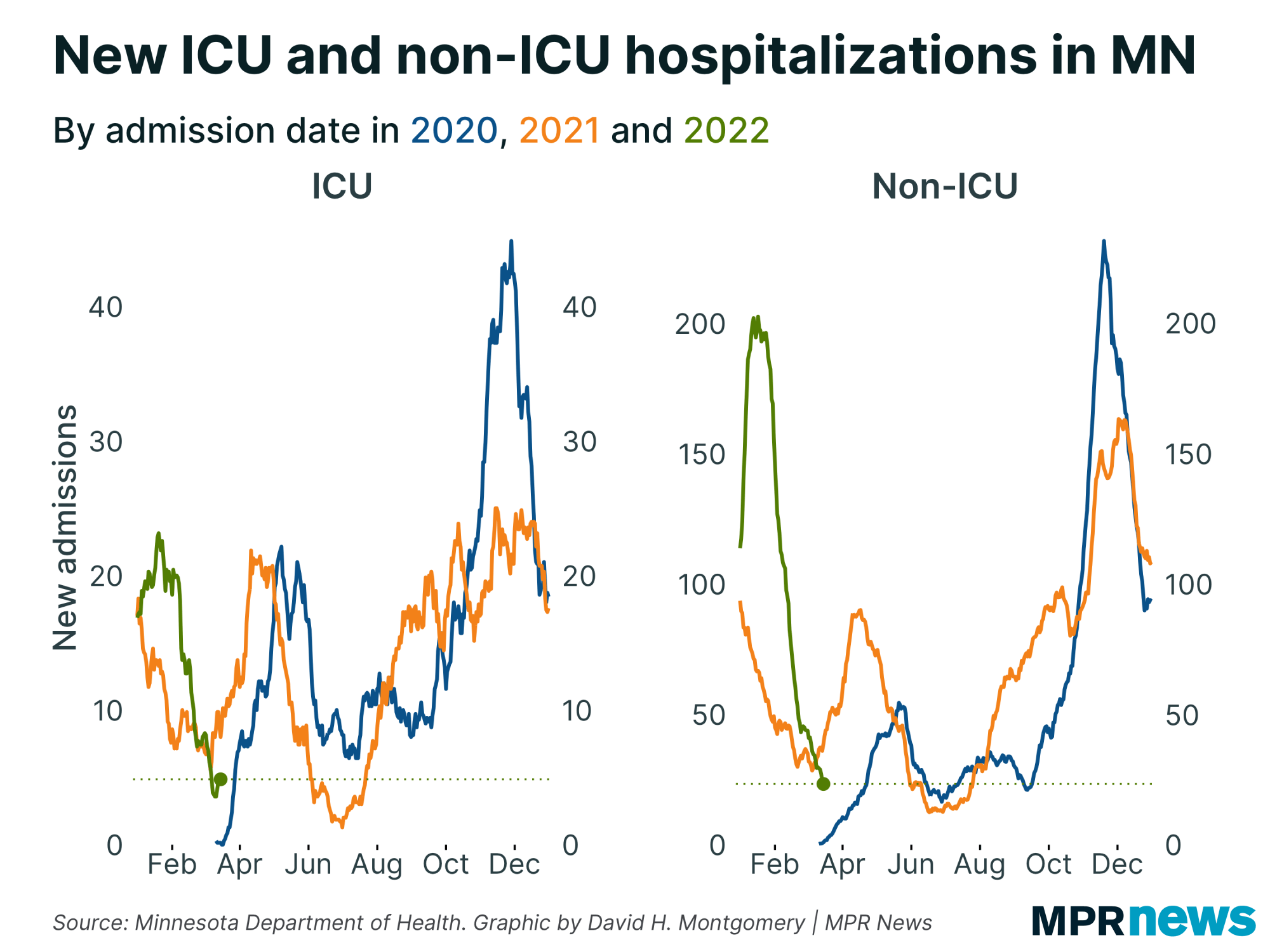
Caseloads have skyrocketed over the past few weeks, bringing a surge of hospitalizations and deaths.
State authorities had worried that late summer and early fall gatherings, sporting events and informal get-togethers would drive an October surge as Minnesotans let down their guard against the virus. That happened, and it’s now spilling into November.
“Minnesota is in a bad spot … and it’s going to get worse before it gets better,” Ehresmann told reporters Monday as she implored Minnesotans to wear masks in public gathering spaces, socially distance and take other measures to stem the spread.
While more testing is uncovering more cases, “it’s not the testing that’s the problem,” Ehresmann said. “It’s the sheer fact that we have so much virus circulating in our state.”
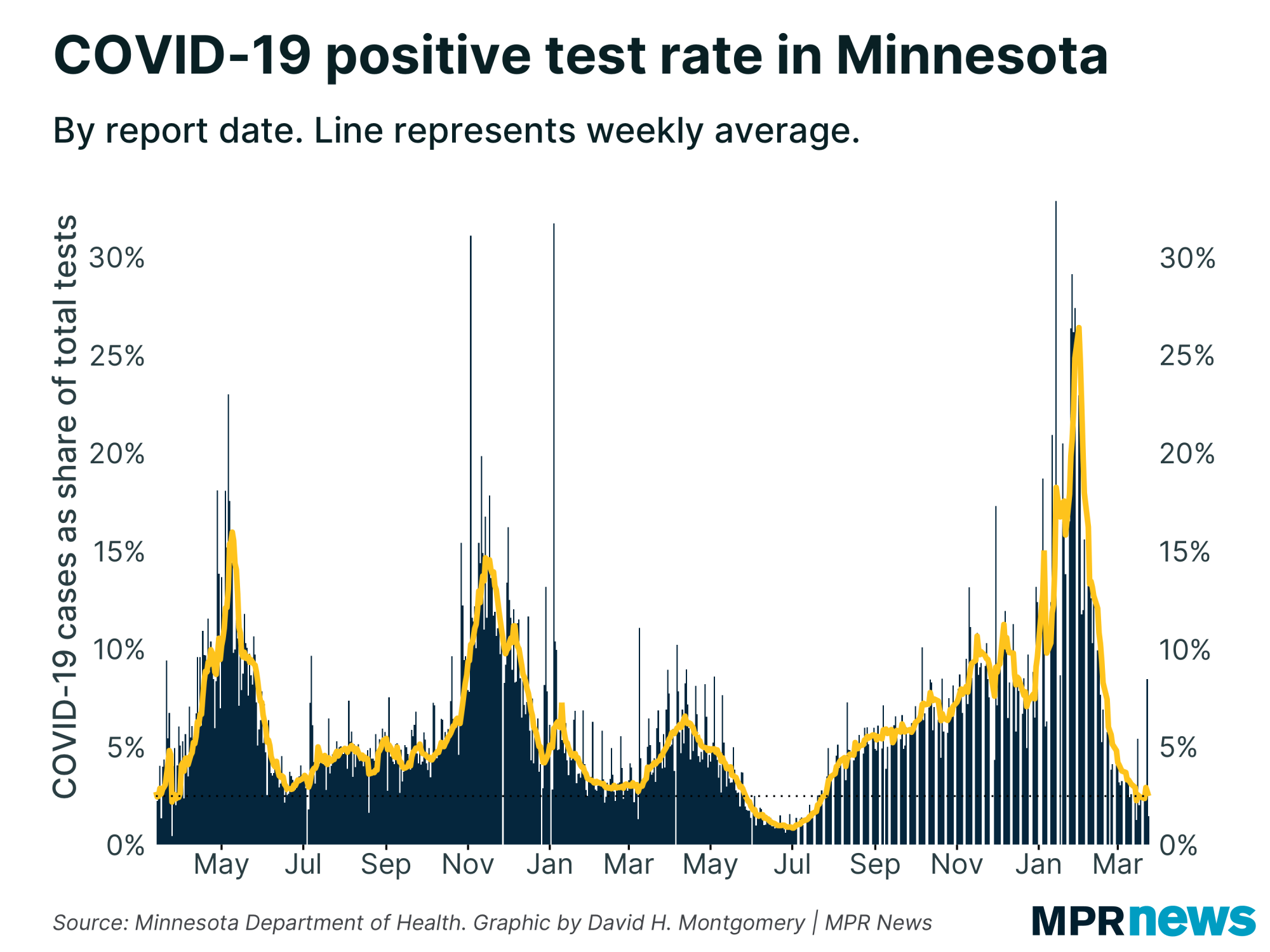
The number of cases of COVID-19 in the state is so high that Gov. Tim Walz this week asked for federal support, including additional medical personnel, for hospitals and long-term care facilities.
‘Incredibly high level of community spread’
Minnesota’s problems are multiplying amid record outbreaks among its neighbors to the east and west. An explosion of cases that turned October into one of Minnesota’s worst months in the pandemic is spilling over into November.
Health investigators, she added, are increasingly finding people with COVID-19 reluctant to provide details that would help trace the disease’s path. “This just accelerates the spread that were seeing even more,” she said.
“If we’re wondering what somebody else is going to do to fix this COVID problem, we’re missing the point,” Malcolm said Monday.
The rampant spread is being driven now by the “thousands of seemingly small decisions” Minnesotans make daily to meet and gather with others without wearing masks, socially distancing or taking other steps to stem the spread, Malcolm told reporters last week.
She reiterated that Monday, noting that cases among health care workers are growing rapidly. They’re getting exposed in the community and bringing it into their health care workplaces.
“It’s not just one or two big notable events that’s causing this incredibly high level of community spread. It's a happy hour with a couple of friends, brunch on the weekends. It’s the weddings,” Malcolm said of the casual interactions now creating big problems. “These are the scenarios driving spread."
Developments around the state
Allina seeking volunteers for COVID vaccine trial
Allina Health is looking for volunteers for a clinical trial of one of the major coronavirus vaccines.
Sixty thousand people will take part in study through 190 locations around the world. Half will get the medicine and the other half will get a placebo.
Dr. Frank Rhame is the principle investigator for the Allina site. He said they're looking volunteers who are 18 and older.
"You want to start with healthy people first [to] get some sense that it's a good idea, that it's working and there's no unexpected side effects. But you also want to get the people who have comorbidities in there because they're the ones that suffer the most and you need to be sure that it works in those groups as well."
Rhame said researchers are especially seeking low-income people and people of color for their study to ensure the vaccine is properly tested on those populations. Those wishing to participate can get more information here.
— Mark Zdechlik | MPR News
Officials urge COVID precautions during deer opener
With Minnesota’s deer hunting season set to open Saturday, state health officials are urging hunters to take precautions against contracting or spreading COVID-19.
“If you're hunting with people outside your immediate household, please mask up while indoors,” including inside buildings at deer camps, “and keep a distance of 6 feet all times inside and out,” Kris Ehresmann, the state’s infectious disease director, said Wednesday.
She urged hunters to stay home if they don’t feel well.
— MPR News Staff
MN opens saliva testing sites to Wisconsinites
As COVID-19 cases surge to the east, Gov. Tim Walz has opened saliva testing sites in St. Paul, Winona and Duluth to people living in Wisconsin, according to the Minnesota Department of Health.
Minnesota is investing at least $14 million of its federal CARES Act funding into saliva coronavirus testing, a process developed at Rutgers University and marketed by Vault Health.
Public health officials say it's a relatively easy and fast way to test more people for the virus.
Some of the Minnesota's CARES Act funding will go to covering the cost of the test, and Minnesota is working out an agreement to make sure Wisconsin covers the cost of the test for its residents.
— Catharine Richert | MPR News
Top headlines
Camp Quarantine: 6 tips for forming your COVID-19 winter pod: Experts say one strategy to get through these winter months is to form what’s known as a pod. But finding friends willing to join up with you, and who share your standards, is easier said than done.
COVID-19 in Minnesota
Data in these graphs are based on the Minnesota Department of Health's cumulative totals released at 11 a.m. daily. You can find more detailed statistics on COVID-19 at the Health Department website.


